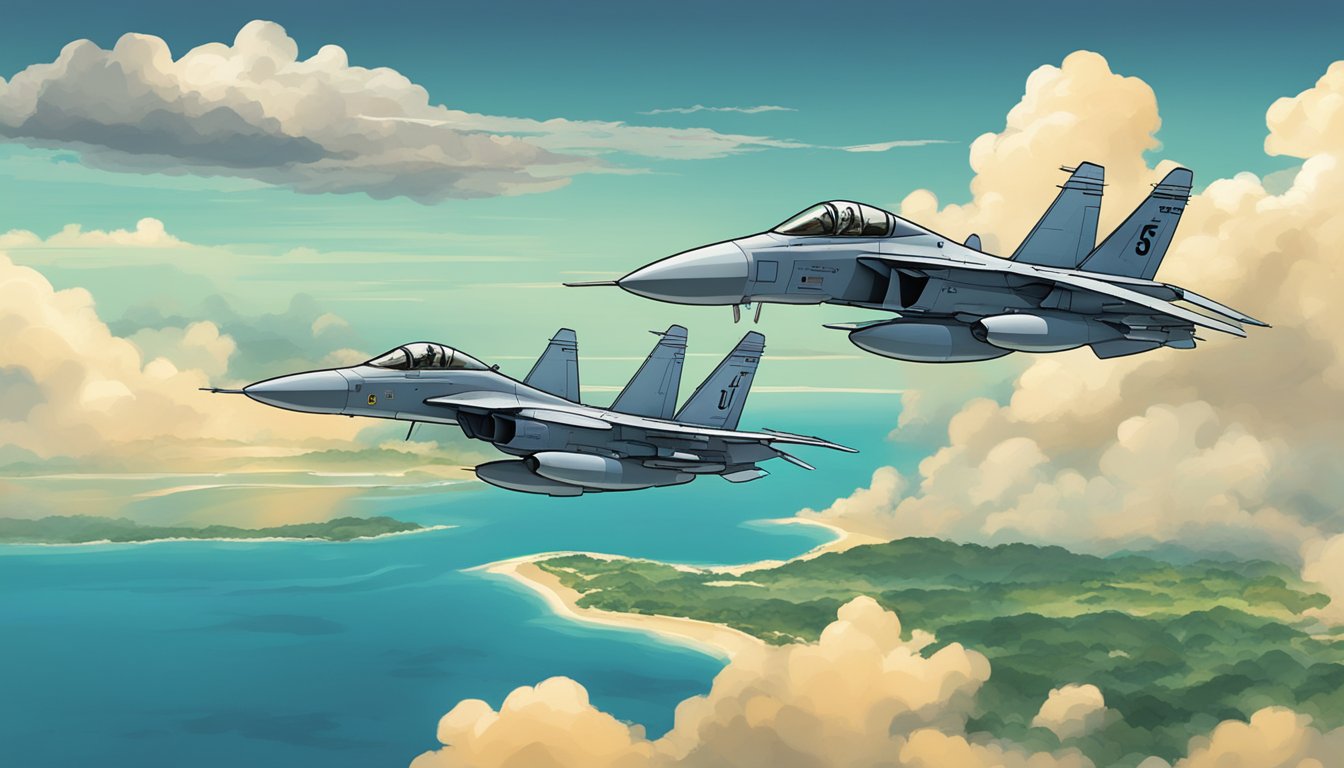On Tuesday, U.S. and Philippine fighter jets flew together over the disputed Scarborough Shoal in the South China Sea, as part of a joint military exercise.
This area has been a longstanding point of contention, especially after incidents last year when Chinese jets shot flares to intimidate a Philippine aircraft.
Joint Military Exercises
This mission represents the first significant collaboration between the two nations’ air forces since the re-election of U.S. President Donald Trump.
His “America First” approach has raised questions about American commitment to its allies in Asia, particularly in light of the previous administration’s efforts to strengthen security partnerships in response to China’s growing assertiveness.
The joint exercise featured two B-1 bombers from the U.S. Air Force, accompanied by three FA-50 fighter jets from the Philippine Air Force.
Maria Consuelo Castillo, a spokesperson for the Philippine Air Force, highlighted that the training involved intercepting threatening aircraft.
It remains uncertain whether Chinese military forces attempted to interfere with their operations during this patrol.
Escalating Tensions
Last August, tensions flared when a Philippine aircraft conducting standard operations over Scarborough Shoal encountered two Chinese warplanes.
The Chinese jets flew dangerously close and discharged flares, a move that invited fierce condemnation from Philippine officials.
Fortunately, the crew of the Philippine NC-212i transport plane emerged unscathed.
The Southern Theater Command of the Chinese People’s Liberation Army claimed that the Philippine aircraft had trespassed into Chinese airspace and warned against actions that could be deemed provocative.
Philippine military chief Gen. Romeo Brawner characterized the Chinese flare display as a serious threat to Philippine personnel, asserting that such acts violate international aviation rules and undermine lawful operations in Philippine airspace.
Commitment to Defense
The Scarborough Shoal, known locally as Bajo de Masinloc, has been a flashpoint for escalating tensions between China and the Philippines.
Both nations, along with several others like Brunei, Malaysia, Vietnam, and Taiwan, hold competing territorial claims in these vital waters, recognized for their importance in global trade and security.
When asked if the allied forces were prepared for possible confrontations with Chinese aircraft, Castillo emphasized that readiness is a core component of their training.
Despite the aggressive maneuvers from foreign entities in the past, she reiterated the Philippine Air Force’s commitment to fulfilling its mission without fear of intimidation.
Risks associated with encounters between U.S. military forces and Chinese aircraft in the region have been well documented.
The U.S. continues to assert its presence in the South China Sea, deploying naval vessels and fighter jets to ensure freedom of navigation and overflight.
China has criticized the U.S. military’s activities in the area, claiming that such a presence disrupts regional stability.
As skirmishes have become more frequent between Chinese and Philippine maritime forces, particularly near Scarborough Shoal and the Second Thomas Shoal, the situation remains volatile.
In light of these tensions, Washington has reiterated its commitment to defend the Philippines, its longest-standing treaty ally in Asia, against any armed attacks on Philippine forces or vessels in the South China Sea.
Source: Militarytimes

